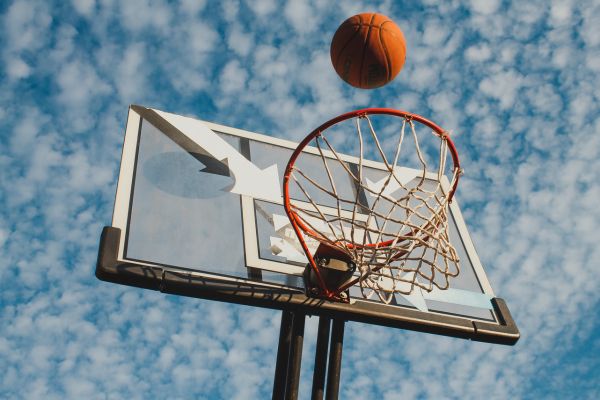Let’s be real—basketball is fast, intense, and just plain exciting. The quick cuts, high jumps, fast breaks—it’s all part of the game. But with that non-stop action comes the not-so-fun part: injuries. Whether you’re just messing around at the park or grinding through practice for your school team, basketball injuries are a real threat. The good news? They’re also largely preventable. That’s right, basketball injuries prevention isn’t rocket science. It’s about being smart, staying aware, and putting in a little extra effort before and after you hit the court.
So, if you love playing and hate sitting on the sidelines, this is for you. Here’s the lowdown on how to stay in the game and keep those nasty sprains, strains, and aches at bay.
Why Basketball Injuries Happen So Often
Basketball is brutal on your joints, especially knees and ankles. The constant sprinting, stopping, twisting, and leaping can wear you down. And let’s not even talk about crashing into other players or landing awkwardly from a layup. It all adds up.
A lot of injuries stem from fatigue or poor form. Others come from skipping warm-ups or playing through pain (not the flex you think it is, by the way). That’s why understanding the risks and actively working on basketball injuries prevention can make a huge difference—not just for your performance, but for your overall health.
Warm-Ups: Not Optional, Ever
Okay, confession time. How many times have you jogged onto the court without doing a proper warm-up? Yeah… thought so. But here’s the thing: jumping into a game cold is just asking for trouble.
Warming up preps your muscles, gets your blood flowing, and helps you move better. A good dynamic warm-up—think high knees, lunges, or light jogging—gets your body game-ready. And trust me, five to ten minutes of this stuff can help avoid weeks on the injury bench.
Stretching post-game matters too. Not the rushed toe touches kind, but real, deep stretches to loosen tight muscles. Think of it as hitting the “reset” button for your body.
Footwear Matters More Than You Think
You might be rocking the freshest sneakers on the block, but are they actually built for basketball? A lot of people wear running shoes or lifestyle kicks while hooping, which is a big mistake. Basketball shoes are designed to support lateral movement, ankle stability, and grip.
Bad shoes can lead to rolled ankles, shin splints, or worse. So, if basketball is your jam, invest in solid, court-appropriate footwear. And don’t wear them until the soles are smoother than the court floor—replace them regularly.
Core and Strength Training: Your Secret Weapon
This one gets overlooked a lot. Most hoopers focus on shooting, dribbling, and cardio, but strength training is key for basketball injuries prevention. A strong core helps with balance and control, reducing the chance of awkward landings or mid-air collisions ending badly.
Building leg strength protects your knees and helps absorb the impact from all that jumping. Don’t skip on those squats, lunges, and planks—even if you’d rather be doing step-back jumpers.
Strength training doesn’t have to mean bulking up like a bodybuilder. It’s about building the kind of muscle that supports movement and keeps your joints aligned when things get intense.
Know Your Limits—and Respect Them
This one’s more mental than physical, but just as important. We all want to play through pain, push past fatigue, and prove our toughness. But here’s the reality: ignoring pain doesn’t make you a hero. It makes you injured.
If something doesn’t feel right, sit out. Talk to a coach, a trainer, or even your buddy on the sidelines. Pain is your body’s way of saying, “Hey, something’s off.” Don’t wait until it starts yelling.
And yeah, conditioning matters too. If you’re gasping for air five minutes in, your body’s not going to be sharp. Tired muscles don’t move well. And that’s exactly when bad landings and twisted joints sneak up on you.
Hydration and Nutrition: Seriously, Don’t Skip This
You’ve heard it before, but staying hydrated and eating right makes a real difference. When your body’s low on fluids or missing key nutrients, it doesn’t recover well. Muscles cramp, reflexes slow, and you become way more prone to injuries.
Basketball injuries prevention isn’t just about stretching or drills. It’s also what you’re putting in your body. Load up on whole foods, stay away from junk before games, and always bring water. Gatorade commercials make it look cool, but plain ol’ water does the job just fine most of the time.
Pay Attention to the Little Things
Sometimes it’s the tiniest habits that make or break your health. Do you always tie your shoes tight? Are your socks sliding around in your shoes? Do you cool down after games or just head straight to the car?
Little stuff like this piles up. Loose shoes can cause blisters or ankle instability. Skipping cooldowns can lead to muscle stiffness. Playing in worn-out gear can mess with your movement.
Basketball injuries prevention is about mindfulness. Just being aware—about your body, your habits, and how you feel before and after games—can go a long way.
Recovery Is Part of the Game
You don’t build strength while training. You build it while recovering. That means sleep matters. So does rest. And yes, even those annoying ice packs have a role.
If you’re playing every day without breaks, you’re not giving your body a chance to catch up. Rest days aren’t for the lazy—they’re for the smart. Muscle recovery, joint health, mental reset… all of it ties into keeping you injury-free.
Massage guns, foam rollers, epsom salt baths—whatever helps you relax those muscles, go for it. This isn’t about pampering. It’s about performance and long-term wellness.
Final Thoughts: Play Hard, Play Smart
Look, injuries might be part of the game, but they don’t have to be your story. When it comes to basketball injuries prevention, it’s not about doing one magical thing. It’s about combining smart habits, listening to your body, and putting in the work before and after the buzzer sounds.
You can play harder, jump higher, and stay on the court longer when you make injury prevention a priority. So warm up, gear up, train smart, and most importantly—enjoy the game.
Because nothing beats that feeling when the shot goes in, the crowd goes wild (or maybe just your friends on the bench), and your body’s right there with you, strong and ready for the next play. Stay safe out there, baller.



